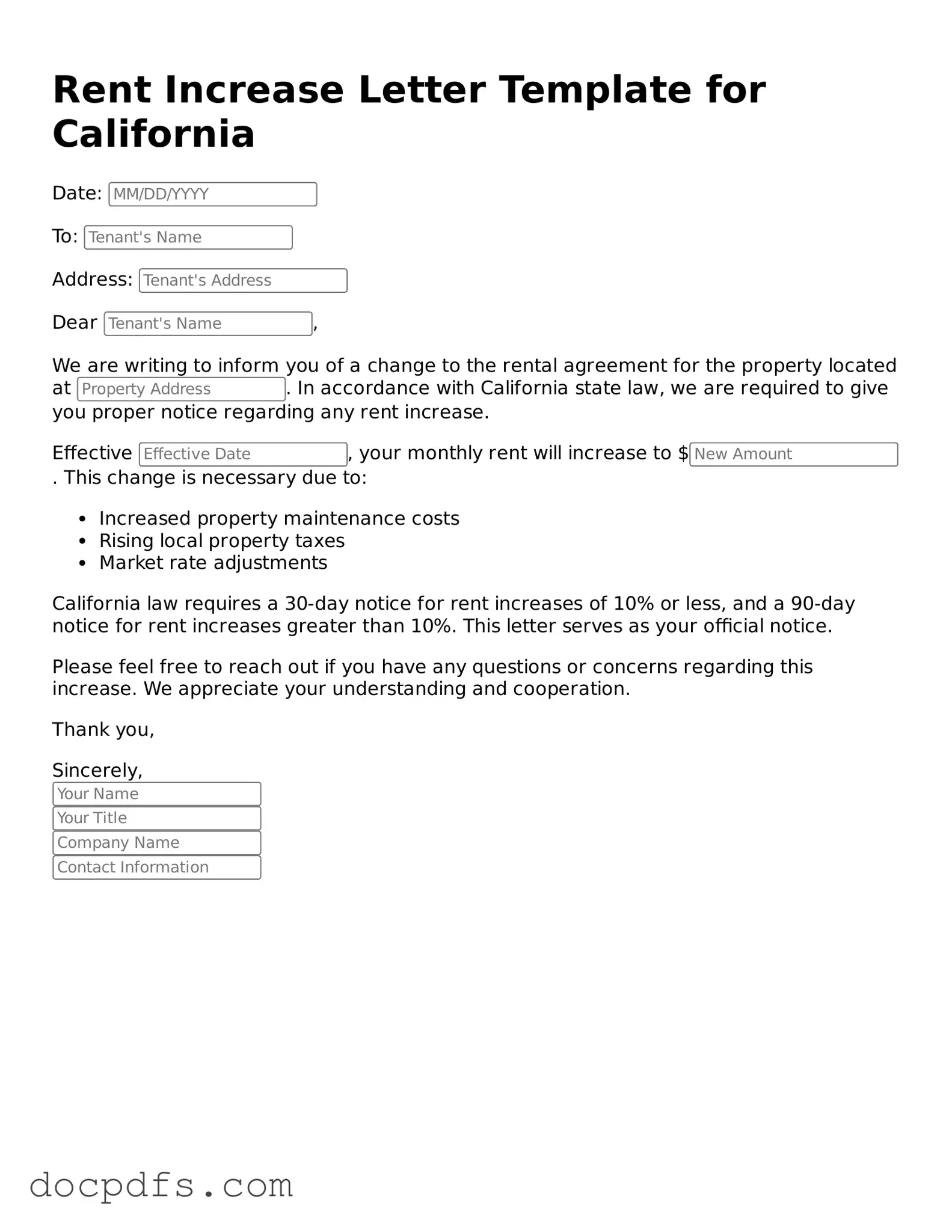What is a Rent Increase Letter?
A Rent Increase Letter is a formal document used by landlords to notify tenants of an upcoming increase in rent. This letter outlines the new rental amount, the effective date of the increase, and any relevant details regarding the change. It serves as a written record of the landlord's intent to adjust the rent and ensures that tenants are informed in a timely manner.
When should I send a Rent Increase Letter?
It is advisable to send a Rent Increase Letter well in advance of the effective date of the increase. Many states require landlords to provide notice at least 30 days before the new rent takes effect. However, specific requirements can vary based on local laws. Always check the regulations in your area to ensure compliance.
A comprehensive Rent Increase Letter should include the following information:
-
The current rent amount
-
The new rent amount
-
The date the new rent will take effect
-
Any reasons for the increase, if applicable
-
Contact information for the landlord or property manager
Can a tenant dispute a rent increase?
Yes, tenants have the right to dispute a rent increase. If the increase is deemed excessive or not in compliance with local laws, tenants can communicate their concerns to the landlord. It may also be beneficial to review the lease agreement for any clauses that pertain to rent increases. In some cases, tenants may seek legal advice or assistance from local tenant advocacy organizations.
Is there a maximum amount a landlord can increase rent?
The maximum allowable rent increase depends on local laws and regulations. Some areas have rent control ordinances that limit how much rent can be increased annually. In contrast, other regions may not have such restrictions. Landlords should familiarize themselves with the laws governing their specific jurisdiction to ensure compliance.
Do I need to provide a reason for the rent increase?
While it is not always legally required to provide a reason for a rent increase, doing so can foster goodwill between landlords and tenants. Providing a rationale, such as increased maintenance costs or property improvements, can help tenants understand the necessity of the adjustment and may reduce potential disputes.
What happens if a tenant does not pay the increased rent?
If a tenant fails to pay the increased rent, the landlord may follow the procedures outlined in the lease agreement and local laws. This could involve issuing a late payment notice or, in severe cases, initiating eviction proceedings. It is important for landlords to adhere to legal protocols to avoid potential disputes.
Can I increase rent multiple times in a year?
Landlords may be able to increase rent multiple times within a year, depending on local laws and the terms of the lease agreement. However, frequent increases can lead to tenant dissatisfaction and potential turnover. It is often advisable to limit increases to once a year to maintain a stable tenant relationship.
